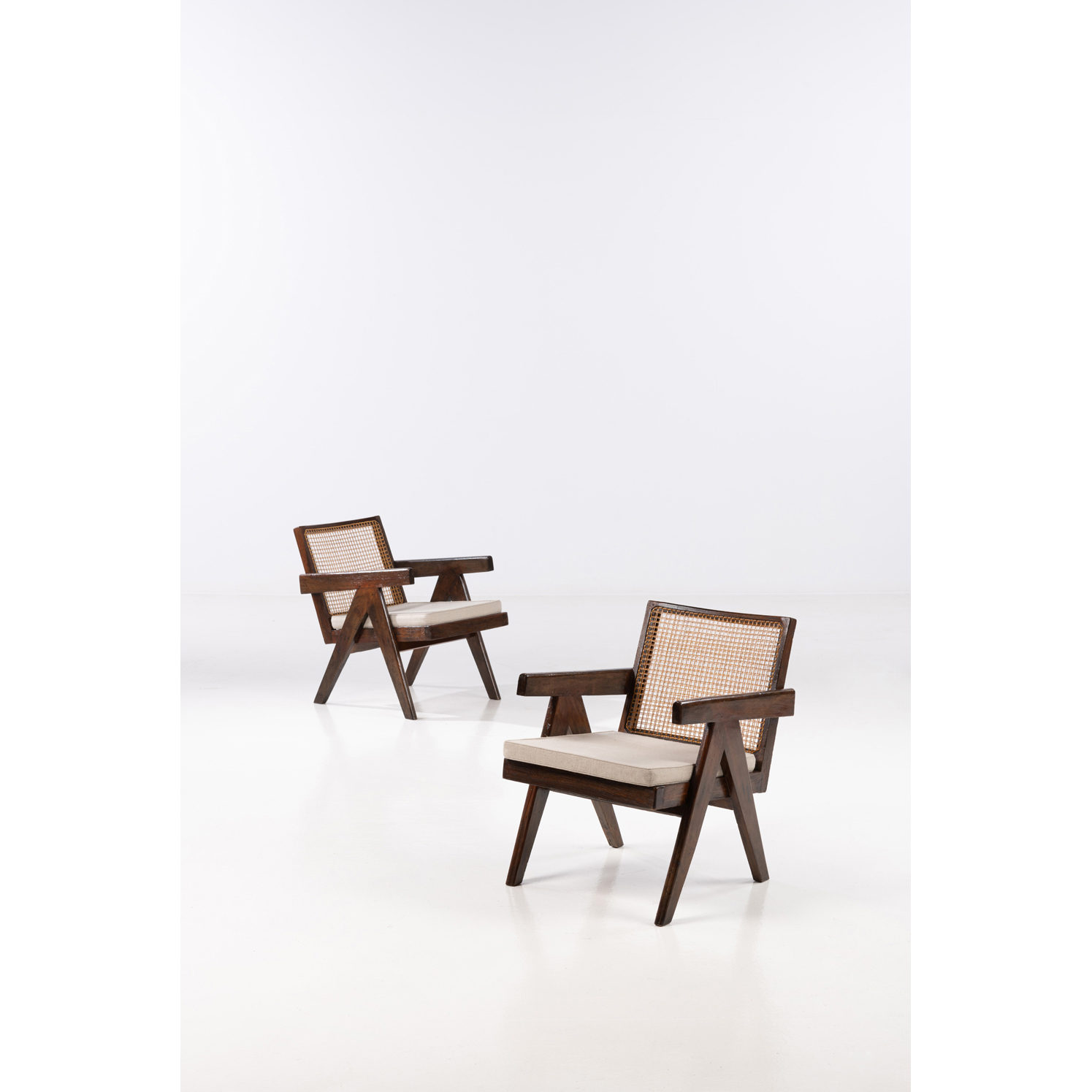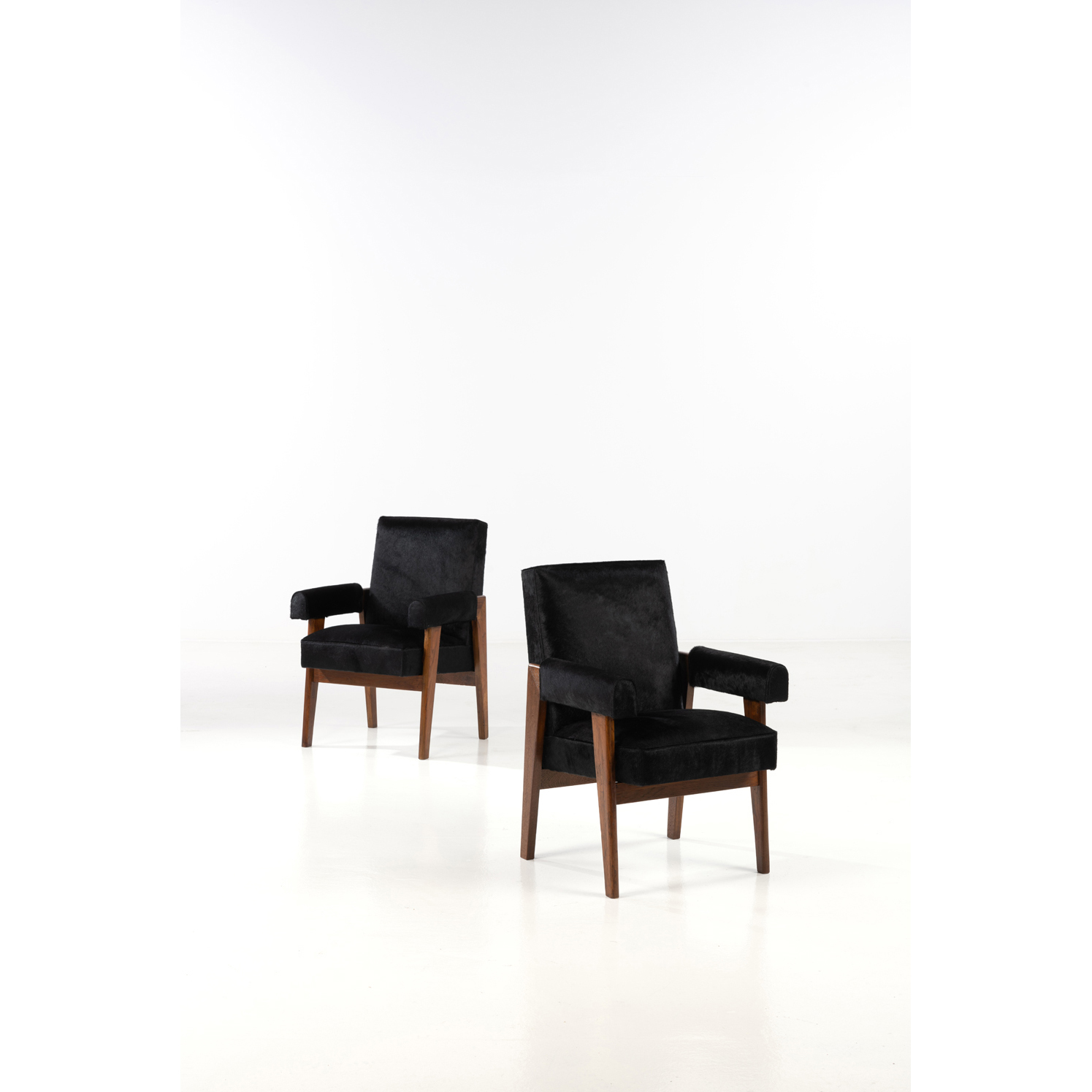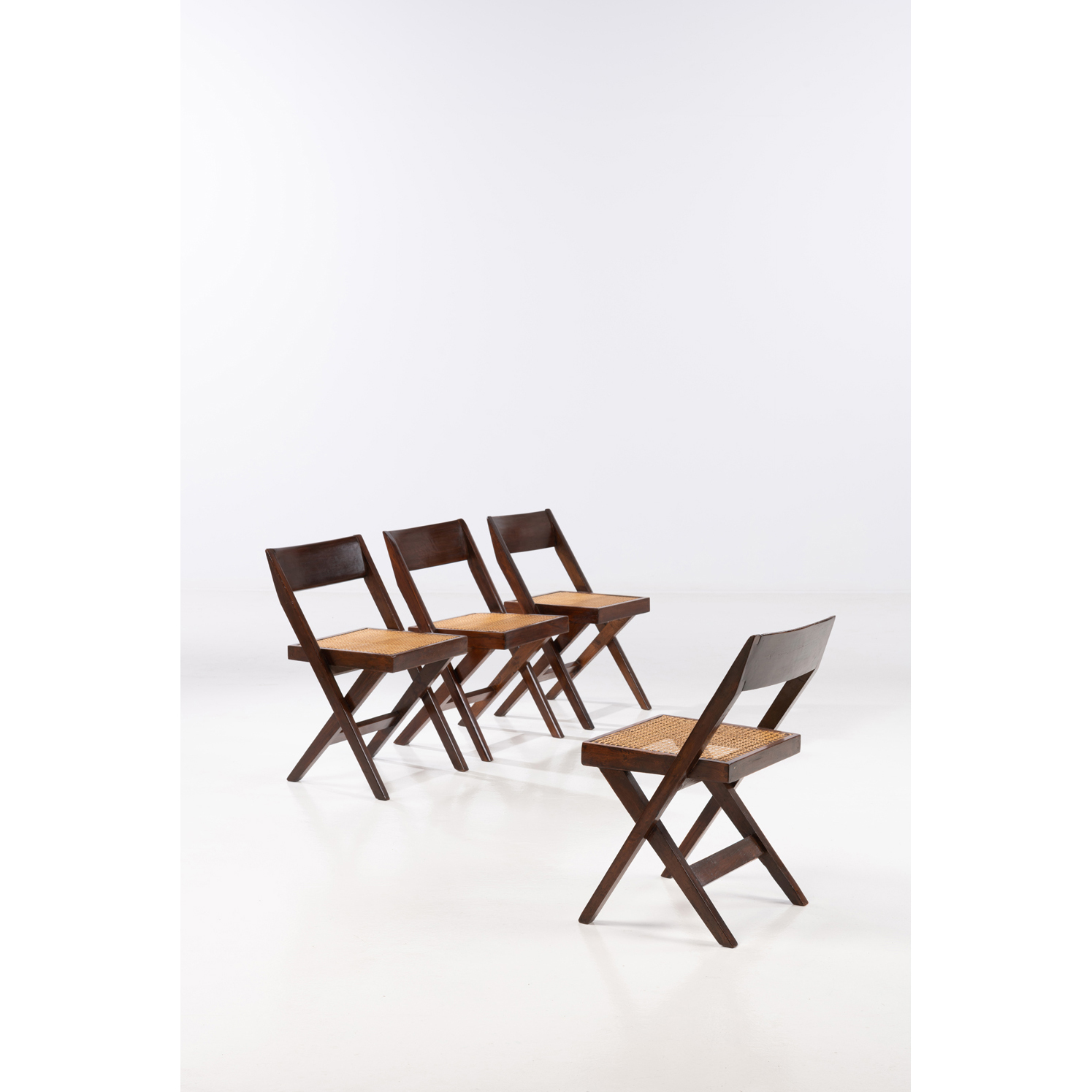On the occasion of the Design sale of 15 July 2020 in Brussels, Piasa auction house celebrates Pierre Jeanneret (1896 - 1967), a cousin of Le Corbusier, and presents a selection of rare pieces by the Swiss architect and designer.
Pierre Jeanneret was born on 22 March 1896 in Geneva, Switzerland. His first cousin, 12 years his senior, is none other than Charles-Édouard Jeanneret dit Le Corbusier. As a young man, Pierre trained at the Geneva School of Fine Arts where he won first prize in architecture, sculpture and painting. In 1921, the apprentice architect moved to Paris and first joined Auguste Perret's studio.
Only one year later, Pierre Jeanneret became close to Le Corbusier, whose reputation was beginning to establish itself in the capital. The two men set up their architectural office on rue de Sèvres and began a fruitful collaboration. Le Corbusier wrote: "I joined forces with my cousin Pierre. With loyalty, optimism, initiative and perseverance, and also with good humour, we set to work. Two men who understand each other are stronger than five others who are alone." With his cousin and friend whom he admires, Pierre affirms his artistic identity and clarifies his vision of architecture.
He refuses any compromise with pre-war conservatism and aspires to a new approach to architectural creation. Thus, Le Corbusier and Pierre write together their manifesto, Cinq points de l'architecture moderne. They formulate the characteristics of the modern building par excellence: stilts, roof terrace, free plan, strip window and free plan. From then on, these five elements were to be found in the two architects' numerous constructions, including the famous Villa Savoye completed in 1931. Pierre Jeanneret is indispensable to Le Corbusier.
On the one hand, he brings him contradiction on certain projects and encourages his genius to surpass himself. On the other hand, Pierre Jeanneret is the head of the workshop and, as such, particularly cultivates a taste for manual and plastic work with raw materials. In this respect, it is the architect Charlotte Perriand who has the most accurate formula: "Le Corbusier was the man of communication, the philosopher too.
Pierre Jeanneret was the shadow, the technical man. But it was an osmosis, they were necessary to each other." In 1951, Indian Prime Minister Nehru invites Le Corbusier to build ex nihilo the new capital of Punjab, Chandigarh. Although they hadn't worked together in the same workshop since the beginning of the Second World War, Le Corbusier called on Pierre to carry out this monumental project.
The latter then became the official town planner of the Indian state of Punjab and personally took charge of the furniture. Pierre Jeanneret's work in Chandigarh bears witness to the acme of his collaboration with Le Corbusier, but also to his concern to always reconcile modern architecture with the reality of the Indian landscape. Thus, like our pair of teak and wickerwork armchairs (lot 185), Pierre is proud of the exotic materials he discovered in India with the pure forms characteristic of the Corbusier style.
Easy armchairs
Teck et cannage, 1955-1956
Estimation : 25000 / 35000 €
The architect spent fifteen years in India supervising Chandigarh's pharaonic programme, before dying shortly after his return to Geneva in 1967.
Pierre Jeanneret (1896-1967)
Advocate chair
Teck et peau, 1955-1956
Estimation : 35000 / 45000 €
The pair of Advocate Chair in teak and skin, created between 1955 and 1956 for the Punjab High Court is remarkable. It is part of the architect's production during the construction of Chandigarh. The rigid geometrical lines of the chairs are softened by the use of natural and exotic materials. The black colour accentuates the elegance of the room, estimated at between 35,000 and 45,000 euros.
Pierre Jeanneret (1896-1967) et Eulie Chowdhury (1923-1995)
Library chairs
Teck et cannage, 1959-1960
Estimation : 35000 / 45000 €
Pierre Jeanneret also collaborated with the Indian architect Eulie Chowdhury on several pieces of furniture. This association testifies to the affection he felt for the country and the Indian population. Indeed, Pierre was the director of the Chandigarh School of Architecture and was keen to pass on to the students the design and experience of his work. The series of four teak and cane chairs, estimated at between 35,000 and 45,000 euros, was made for the library of the University of Chandigarh.




